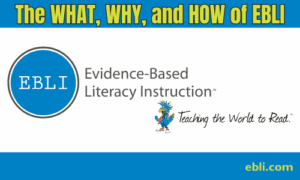Phonemic awareness is a hot topic in recent months and years, and rightly so! The literacy research is rock solid on the importance of phonemic awareness in reading instruction. Back in the mid-90’s, when researching how to teach reading, what I learned about effectively and efficiently teaching reading was heavily infused with phonemic awareness instruction, both with and without letters. Phono-Graphix was the program I used to teach my daughter to read, and I was a Phono-Graphix teacher trainer for almost 5 years. Luckily for me, I’ve never known anything different!
GAMES TO BOOST PHONEMIC AWARENESS
Long after my daughter was an excellent reader and writer, I continued to do phonemic awareness games with her and with my two other children. Often I was the ‘volunteer mom’ for parties in their classrooms and phonemic awareness games were the top request for holiday parties. I play phonemic awareness games with my great nieces and nephews, and now my own grandchildren, from the time they are born. Sometimes I even segment and blend words when talking to them in-utero. I know, I know… I do realize I can be a bit over the top when it comes to literacy!
I’ll share about the types of games I do from birth to school age to ensure kids are proficient at blending, segmenting, phoneme (or sound) deletion, and phoneme substitution. Check out the webinar that accompanies this blog to get more details on what these games look like in action! Know that you, the adult, will be strengthening your own phonemic awareness skills (and reading) by playing these games with children. They may be challenging for you at first but the more you do them, the easier they will get.
Just like learning to read is not a natural skill like walking and talking are, knowing that words are made up of sounds is not something people know naturally. Every word we say is made up of separate sounds (unless it is a one sound word like ‘a’ or ‘I’) that we say together and say very quickly. If children hear sounds separated and then put into words at a very early age, then they will be primed to learn to read quickly as long as they are taught how to decode in an explicit, systematic manner.
Talking in sounds is something I do regularly with little kids. I’d segment sounds and say the word to my grandsons from the time they were born. When I’m saying a sentence, I’d segment the last word. For example, “Christopher, look at the /c/ /l/ /o/ /k/…clock.” Since birth he has been obsessed with the grandfather clock in my hallway and one of the first words he said was ‘clock’. Or “Arlo, Gaga is going to give you a /k/ /i/ /s/…kiss.” When we are reading books, every sentence or two I will say the sounds while pointing underneath the spellings for a word then say the word. What is very interesting is that they both seem so enthralled with hearing segmenting than the word!
I have magnetic letters on my refrigerator and dishwasher. Christopher will play with them for long periods. I’ll sit down by him and make a word while I put the letters in order /p/ /i/ /g/…pig. Then I will oink or do some crazy grandma thing. My niece does the same thing in the bathtub with her son Jackson. By the time he was two he’d grab a letter and say the sound that goes with it!
Teaching body parts is great to do with segmenting. For the babies, I’ll say “I’m going to kiss your /n/ o//z/…nose,” and then kiss them on their nose. Chin, head, arm, ear, cheek, head, neck, belly…lots of kisses and learning of body parts. When they are older I play the game as they come down the slide but I don’t tell them the word. They have to say the word before they slide. “I’m going to grab your /f/ /oo/ /t/ or /e/ /l/ /b/ /oa/.” I’ll then turn it around and have them tell me the sounds so I can figure out the word. They love to try to stump me!
Once they are pretty good at segmenting the sounds and blending (or putting the sounds together), we start deleting sounds. I’ll ask them “What is bat if you don’t say the /b/?” Just be sure you do not remove the vowel because that is the volume! Increase the difficulty by using longer words and taking out sounds in the middle like “What is green without the /r/?” and “What is plant without the /n/?”
Another great phoneme deletion activity is the Name Game song. ‘Kelly Kelly bo belly, banana fanna fo felly, me my mo melly, KELLY!’ This is great to practice both rhyming and phoneme deletion. It can be done with one child or in a classroom. Children absolutely love it! A word of caution for classrooms: be sure to check the student names and be sure that you won’t create a naughty word when you change the first sound. Names like Tucker will get you in hot water!
All of these games are great to do in Pre-School, K, and 1st classrooms. I often do it with colors, and if they are wearing that color, I have them put their hand on their head or line up or stand up. The possibilities are endless! Let each student be the ‘sound king or queen’. During show and tell they could say the sounds of what they are going to share and see if the class can guess it. Of course, this can be done with your own child at home. What is in my hand? What is for dinner? Where are we going? Who is coming to visit? The possibilities are endless!
With a group, you can play ‘sound catch’. The first person has a ball. They say a word and throw the ball to someone. That person has to say a word that starts with the last SOUND (not letter) of the word the thrower said. For example, if the thrower says ‘graph’ the person who catches the ball says a word that begins with the sound /f/. They may say ‘fine’ and the next person has to say a word that starts with /n/. I learned this game at a conference and it is a lot more challenging than you would think! When they say a word that doesn’t start with the correct sound, the parent or teacher will need to provide redirection (more on how to do that in the webinar!).
A favorite classroom party game was the ‘ditch a sound’ bee. At a holiday party, I would split the class in two teams in a line and ask them to remove a sound from various words. I mostly used multi-syllable words and, if possible, words that pertained to the holiday. However, this has to be done in a classroom where the students have been previously taught how to do this skill! For Christmas, I might ask “What is party without the /r/?” (potty) or “What is ‘vacation’ without the /sh/?” (vacayun). When a student gave the incorrect answer, I would help them correct it even before they would leave the line and sit down.
Pig Latin is such a powerful and fun way to boost the phonemic awareness ability of anyone! You must be able to manipulate sounds to be able to communicate in Pig Latin. The directions for doing this can be found here and there are many ways to play with this. In a classroom, I have the students write what they think I said on a whiteboard and with virtual instruction they can private message their answer to me. As they get more familiar, we can have conversations in Pig Latin. It is great fun to communicate in an ‘alien language’! Watch the webinar for examples.
‘Sound play’ is a whole lot of fun for both the child(ren) and the adult teaching it! These activities are simple and powerful. They can be done in a car or on the bus, on a walk, during dinner, at recess, basically anywhere! As an added bonus, it lays a very solid foundation to accelerate accurate, automatic reading and spelling acquisition for all children!





